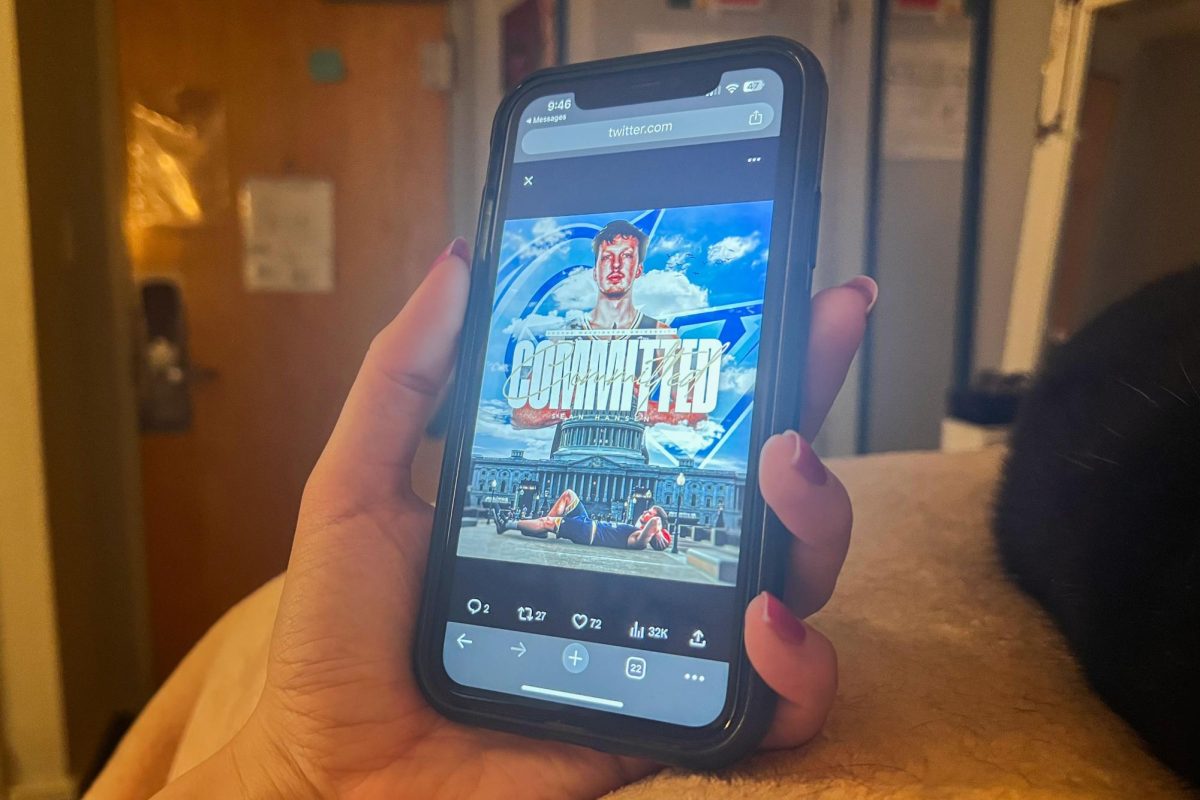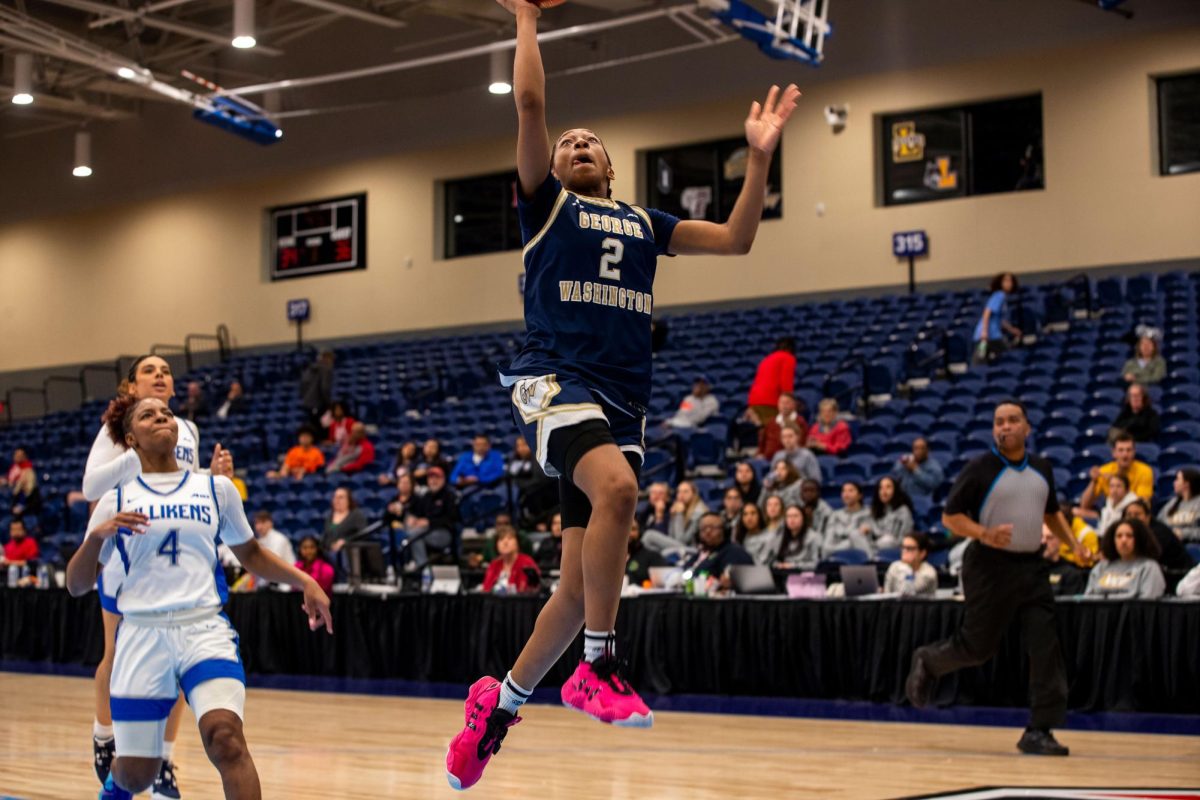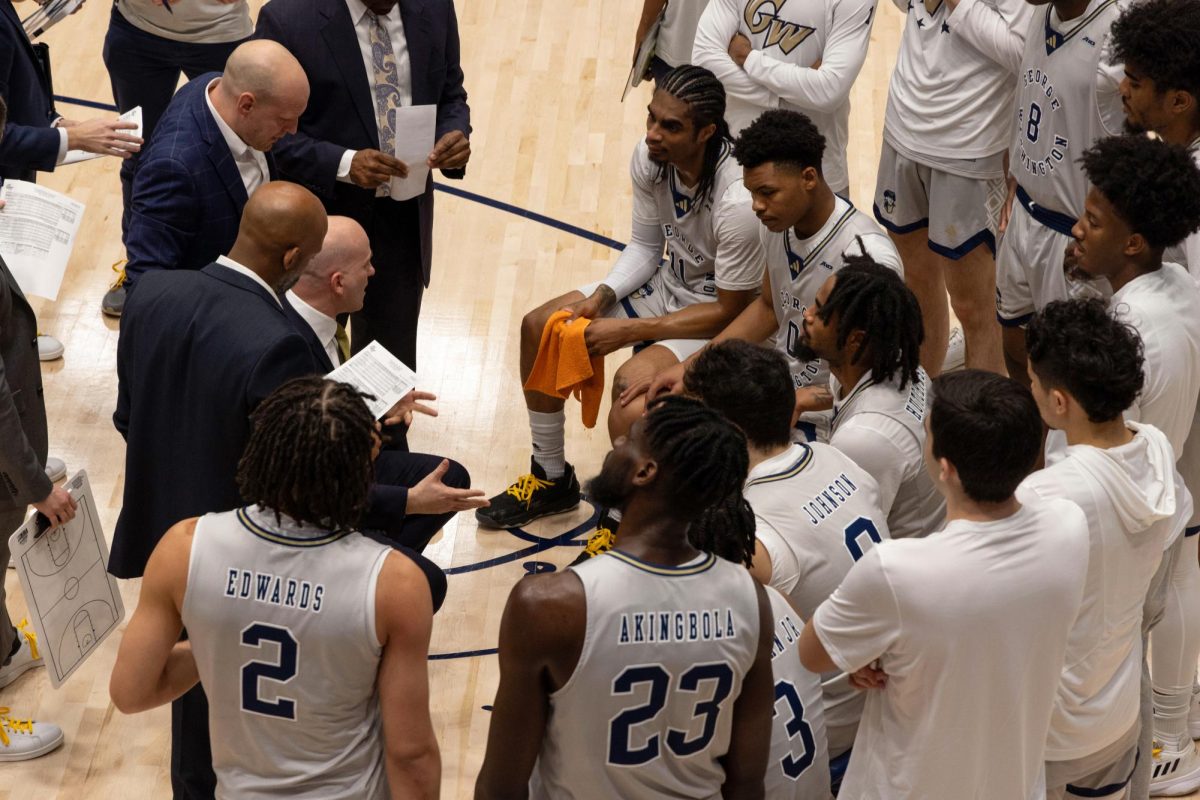When fencing was invented in about 1190 BC, it was primarily used as a means of practicing swordsmanship. Ancient Egyptians, Babylonians, Greeks, Persians and Romans all used the sport for duels and preparation for war. Two weekends ago, the GW club fencing team used its swords to reach a more peaceful goal – second place.
In the only competition of its second season, the fencing team took second place out of four teams April 12 at the Maryland- Baltimore County Golden Coin Classic. The tournament included UMBC, Maryland and St. Mary’s College.
“The tournament showed the amount of talent we have as a team,” said senior David Lunin, who founded the club nearly two years ago. “We ended the year on a high note and hopefully we can continue our success into next year.”
Fencing is divided into three different types of competition – foil, epee and sabre, one for each type of sword. A foil is a 35-inch weapon that weighs about a pound. In foil competition, the only way to score a point is to hit the opponent in the back or torso with the tip of the blade. Foil also relies on “right of way,” which means only the attacker can score a point.
The epee blade is similar to the foil except it weights more (1.75 pounds), has a stiffer blade and a larger bell guard. To score in epee, the player must hit their opponent anywhere on their body with the tip of the blade.
The sabre, which is a modern version of a cavalry sword, is also similar in length and weight to the foil but is used to slash rather than make straight hits; fencers score points by hitting opponents on the side of the blade.
“Fencing combines strong mentality, strength, judgment and practice, which makes it unique and very difficult to master,” said freshman Michael Cahn, the newly appointed president of the club. “Fencing is equivalent to a chess game. You always have to be a few moves ahead of your opponent.”
Fencers compete on a rectangular strip that is about six feet wide and 46 feet long for six minutes or until a player scores five points. Each valid hit counts as a point. A director, which is similar to a referee, supervises the match, awards points and gives penalties.
For safety reasons, fencers wear protective equipment that includes a padded, long-sleeved, white jacket, a padded underarm protector, breast protectors, white gloves, a wire mesh mask, white pants and fencing shoes.
Because of these measures, Lunin said, “fencing is a very safe sport. We follow specific guidelines to make sure people do not get hurt.”
At the Golden Coin Classic, GW graduate student Jason Chambers took first place in foil and freshman Janeane Melandano took third place. In epee, Mike Domenico finished in second place. GW did not compete in sabre.
The competition was the only one of the year for the fencing club, but next year Cahn said the team hopes to expand by going to at least four tournaments, including the Fencing National Club Championship at Temple University, and possibly hosting a tournament at GW.
The team will receive more funds next year through various fundraising activities, he said, which will allow them to purchase more equipment.
Prior to this year, the team competed with no electronic equipment, also known as “dry fencing.” But with the equipment they purchased this year, each player was hooked up to a buzzer that would go off when they were hit. The electronic equipment is used in the Olympics and is much more accurate at determining hits, Cahn said.
“This is a time of growth for the fencing club, in terms of acquiring more equipment, getting more members and competing in more tournaments,” he added.
The GW fencing team currently has about 15 active members and the team is steadily growing. The club holds practice from 10 p.m. to midnight Thursday nights at the Smith Center and from 5 to 7 p.m. Friday nights in the K Gym.
Cahn said the fencing team is open to anyone who is interested. GW offers a fencing class of its own, but the fencing club goes beyond the class, extending abilities and offering lessons from experienced fencers, Cahn said.
“I strongly encourage anyone who has ever been interested in fencing to give it a shot next year,” he said. “You have nothing to lose and you might pick up a new hobby.”







